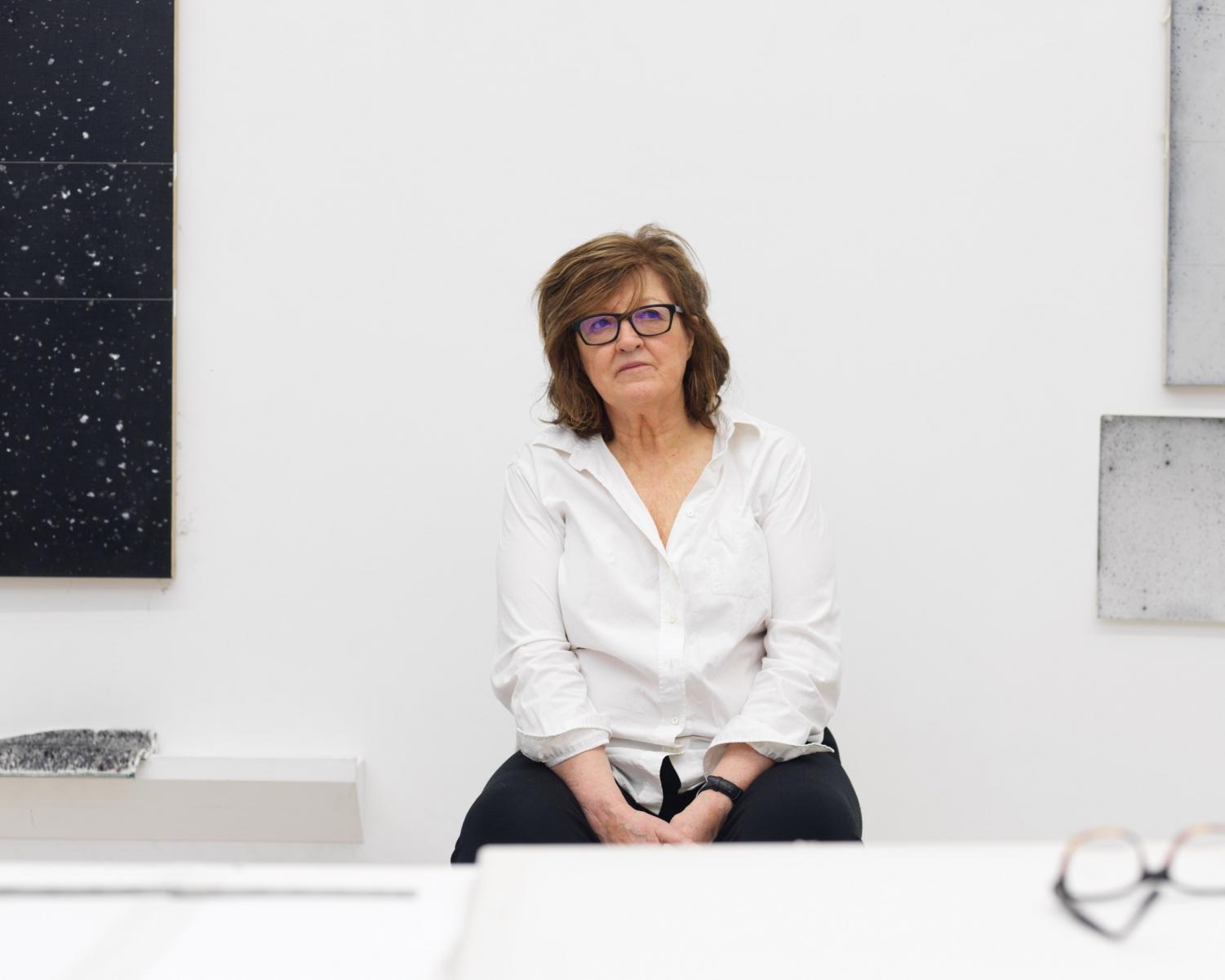Vija Celmins MET Exhibition Stuns New Yorkers
November 2, 2019
Walking into the fifth-floor gallery at the Met Breuer and coming face to face with a work by Vija Celmins, you may think that you are viewing the work of a photographer. The image you are standing in front of is of the ocean’s surface, a cropped section of a vast body of water, captured in black and white. Then suddenly you notice something interesting about the image that makes you wonder. You step closer to it, focus your eyes on the details, and realize that it is not a film image at all, but rather a painstakingly realistic rendering in graphite. The rippling waves and the light reflecting off of them are not captured through a lens but sketched by hand with a pencil in various shades of grey and black. It is a marvel to look at.
This fall and winter, the Met Breuer is showcasing this drawing and 120 other works of art by Vija Celmins in their latest show, To Fix the Image in Memory. With the goal of always capturing an ephemeral moment through her art, this retrospective show takes many of Celmins’ most affecting works and allows the viewer to experience her creative world from the beginning of her career to now. Born in Latvia in 1938, Celmins was only two years old when the Soviet Army invaded the country, eventually forcing her family to flee their home on a German Ship. After living at displaced person camps around Europe for several months, the family came to America in 1948 where they lived in Indianapolis. It was here that Celmins began drawing, and when the time came for her to go to college, she got her art degree and moved to Los Angeles. In California, Celmins really began experimenting with her art, taking photographs and using reference photos to produce compelling images in paint and pencil. Aside from using her photos as reference, Celmins also used her surroundings as reference for her art; creating a series of paintings that featured objects from around her small L.A. apartment, such as a lamp and a hot pot. Then, in 1964 she had her first solo show, which showcased her drawings of World War Two planes, inspired by the planes she recalls seeing as a young girl in Europe. Upon walking into the exhibition, these are the works that you are met with first, and it really helps you get acquainted with Celmins’ unique aesthetic, while also allowing you a glimpse into her life through the subjects that represent her as a person.
Continuing onto the lower level of the exhibition, you enter the next phase of Celmins’ artistic career: her famous “surface drawings.” These drawings aim to capture the surface of a particular subject matter, such as the ocean surface, a close-up surface of a spiderweb, a small portion of stones in a vast desert, or even the night sky. Celmins’ was fascinated by the idea of surfaces, and how simply capturing a small portion of a large surface on paper or canvas created an intimate and secular experience for her viewers. She believed that she could give people things that they couldn’t typically have by drawing or painting them, such as the ocean, the stars, or the moon. Suddenly a white sheet of paper could become someone’s very own night sky. With this in mind, walking through the exhibition is a special experience that allows you to go to the moon, stand amidst the stars, and study the rocks in a desert just by looking at the work of art in front of you. Experiencing the work of Celmins is truly a wonder, and to have the opportunity to experience her pieces in a retrospective is one that is not to be missed. Allow yourself to be transported by her work now through January 12th at the Met Breuer.

